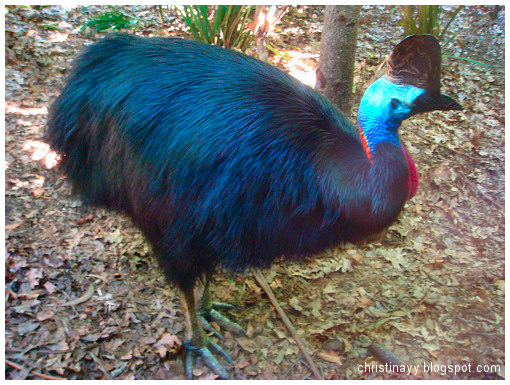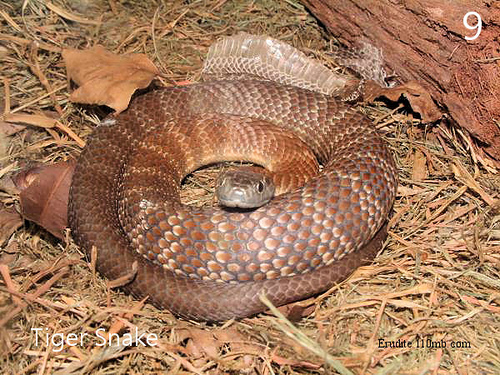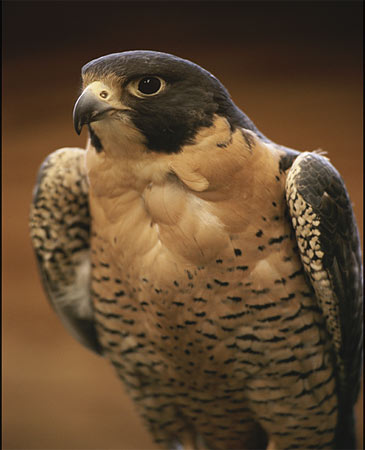The life cycles of insects vary but most hatch from eggs. Insect growth is constrained by the inelastic exoskeleton and development involves a series of molts. The immature stages can differ from the adults in structure, habit and habitat and can include a passive pupal stage in those groups that undergo complete metamorphosis. Insects that undergo incomplete metamorphosis lack a pupal stage and adults develop through a series of nymphal stages.[7] The higher level relationship of the hexapoda is unclear. Fossilized insects of enormous size have been found from the Paleozoic Era, including giant dragonflies with wingspans of 55 to 70 cm (22–28 in). The most diverse insect groups appear to have coevolved with flowering plants.
Insects typically move about by walking, flying or occasionally sinking and swimming at the same time. Because it allows for rapid yet stable movement, many insects adopt a tripedal gait in which they walk with their legs touching the ground in alternating triangles. Insects are the only invertebrates to have evolved flight. Many insects spend at least part of their life underwater, with larval adaptations that include gills and some adult insects are aquatic and have adaptations for swimming. Some species, like water striders, are capable of walking on the surface of water.
Insects are mostly solitary, but some insects, such as certain bees, ants, and termites are social and live in large, well-organized colonies. Some insects, like earwigs, show maternal care, guarding their eggs and young. Insects can communicate with each other in a variety of ways. Male moths can sense the pheromones of female moths over distances of many kilometers. Other species communicate with sounds: crickets stridulate, or rub their wings together, to attract a mate and repel other males. Lampyridae in the beetle order Coleoptera communicate with light.
Humans regard certain insects as pests and attempt to control them using insecticides and a host of other techniques. Some insects damage crops by feeding on sap, leaves or fruits, a few bite humans and livestock, alive and dead, to feed on blood and some are capable of transmitting diseases to humans, pets and livestock. Many other insects are considered ecologically beneficial and a few provide direct economic benefit. Silkworms and bees have been domesticated by humans for the production of silk and honey, respectively.
 General body plan
General body planInsects have segmented bodies supported by an exoskeleton, a hard outer covering made mostly of chitin. The segments of the body are organized into three distinctive but interconnected units, or tagmata: a head, a thorax, and an abdomen.[8] The head supports a pair of sensory antennae, a pair of compound eyes, and, if present, one to three simple eyes (or ocelli) and three sets of variously modified appendages that form the mouthparts. The thorax has six segmented legs—one pair each for the prothorax, mesothorax and the metathorax segments making up the thorax—and, if present in the species, two or four wings. The abdomen consists of eleven segments, though in a few species of insects these segments may be fused together or reduced in size. The abdomen also contains most of the digestive, respiratory, excretory and reproductive internal structures.[9]:22–48 There is considerable variation and many adaptations in the body parts of insects especially wings, legs, antenna, mouth-parts etc.
[edit] Exoskeleton
Insect outer skeleton, the cuticle, is made up of two layers: the epicuticle, which is a thin and waxy water resistant outer layer and contains no chitin, and a lower layer called the procuticle. The procuticle is chitinous and much thicker than the epicuticle and has two layers: an outer layer known as the exocuticle and an inner layer known as the endocuticle. The tough and flexible endocuticle is built from numerous layers of fibrous chitin and proteins, criss-crossing each others in a sandwich pattern, while the exocuticle is rigid and hardened.[9]:22–24 The exocuticle is greatly reduced in many soft-bodied insects (e.g., caterpillars), especially during their larval stages.
Insects are the only invertebrates to have developed active flight capability, and this has played an important role in their success.[9]:186 These muscles are able to contract multiple times for each single nerve impulse, allowing the wings to beat faster than would ordinarily be possible. Having their muscles attached to their exoskeletons is more efficient and allows more muscle connections; crustaceans also use the same method, though all spiders use hydraulic pressure to extend their legs, a system inherited from their pre-arthropod ancestors. Unlike insects, though, most aquatic crustaceans are biomineralized with calcium carbonate extracted from the water.[10][11]
[edit] Nervous system
The nervous system of an insect can be divided into a brain and a ventral nerve cord. The head capsule, made up of six fused segments, each with a pair of ganglia, or a cluster of nerve cells outside of the brain. The first three pairs of ganglia are fused into the brain, while the three following pairs are fused into a structure of three pairs of ganglia under the insect's esophagus, called the subesophageal ganglion.[9]:57














.JPG)

.jpg)
.JPG)

.jpg)































